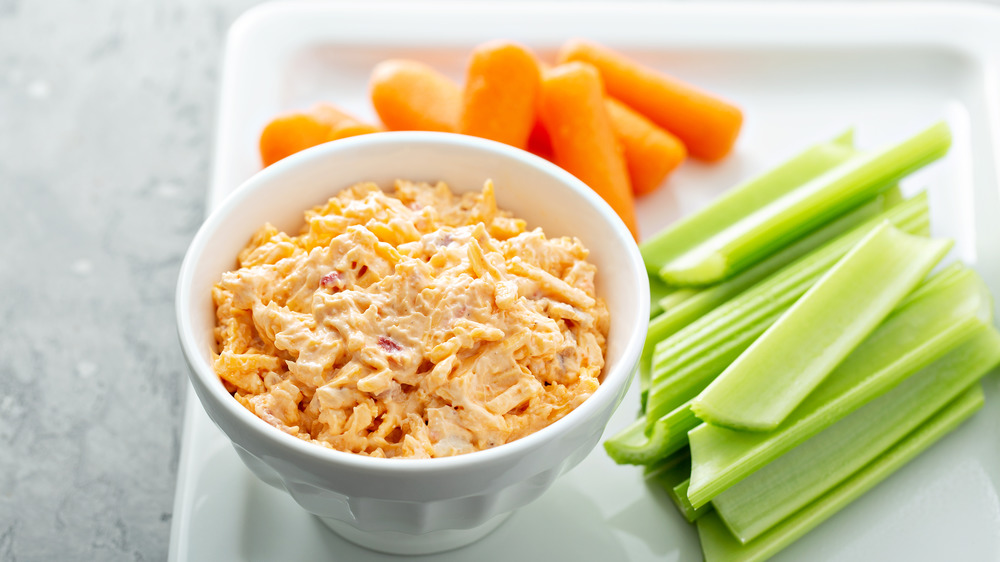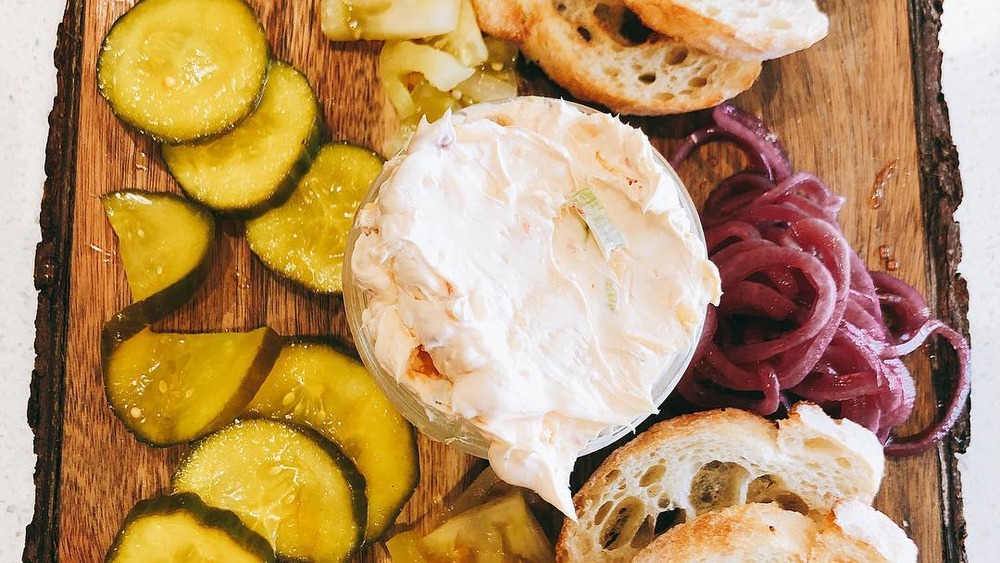What Is Pimento Cheese Really Made Of?
There are a number of dishes which are considered sacred to a Southern kitchen, but few hold a place as important as pimento cheese. Most of us know pimento cheese to be the "pâté of the South," and is used as a sandwich filling and a dip. It regularly makes an appearance at teatime, in lunchboxes, and even as a snack in one of the country's most prestigious sporting events, the Masters golf tournament. It may come as a surprise then, to find that pimento cheese began as a commercial Northern invention, and the result of blending imported, canned Spanish pimiento peppers and cream cheese or Neufchâtel (via the New York Times).
Noted cookbook author Anne Bryn says pimento cheese really came into its own during the First World War, because it was a quick and easy way to feed both troops and volunteers. It was then left to newspaper and magazine food writers to suggest ways to make this bland, shelf-stable staple into a pantry star. Some of the add-ons which got a mention include mayonnaise, lemon juice, and Louisiana hot sauce (via Southern Kitchen). It is the add-ons that eventually gave pimento cheese the DNA that makes it the Southern culinary star it is today.
Mayonnaise is a key ingredient in pimento cheese
Most food writers today agree that pimento cheese wouldn't be what it is without mayonnaise, and whether you use Duke's or Hellmann's depends entirely on what you grew up with. Charleston, South Carolina-based cookbook writers Matt Lee and Ted Lee also add extra-sharp cheddar cheese and softened cream cheese in a nod to pimento cheese's roots, in a recipe they shared with The New York Times.
In her piece dissecting the roots and evolution of pimento cheese for Southern Kitchen, Byrn speaks to Julie Osteen, whose pimento cheese stands head and shoulders above that of her peers. "I have several ingredients that I believe can make pimento cheese 'a cut above,'" said Osteen. "Roasted red peppers rather than pimentos. I use half mayo (Duke's, of course) and softened cream cheese, grated Vidalia onion, diced pickled jalapeño and jalapeño juice (sparingly), as well as cayenne pepper for heat, and 3-to-1 extra sharp cheddar cheese to Vermont cheddar. I add salt and pepper as needed." (Osteen's recipe can be found at Southern Kitchen.)
As Osteen mentions, and ironically, the one thing that appears to be unnecessary in a pimento cheese recipe, is southern pimento itself, because if you can't find any jarred American pimento, roasted red peppers — either freshly roasted or bottled — will do just as well.

